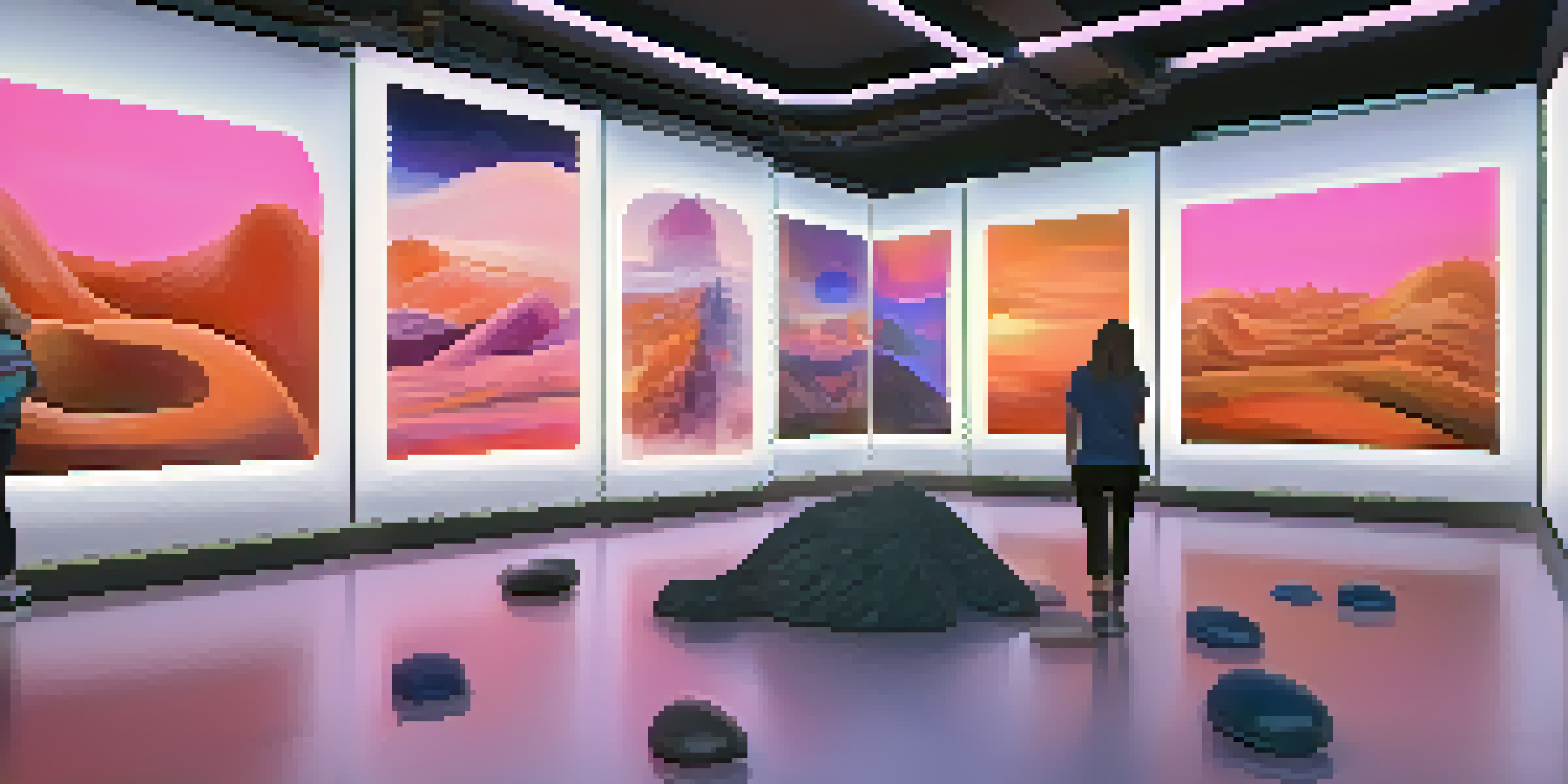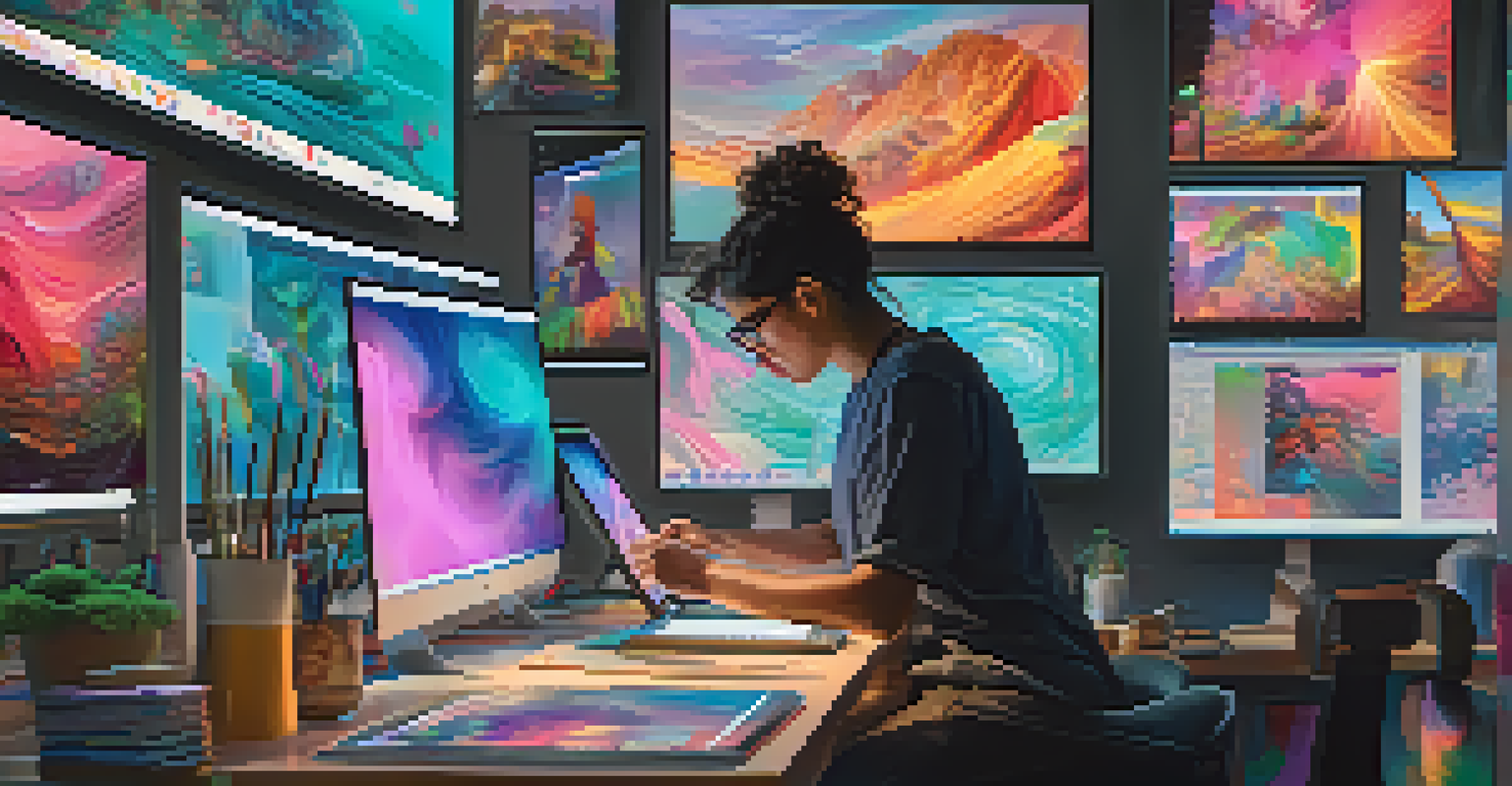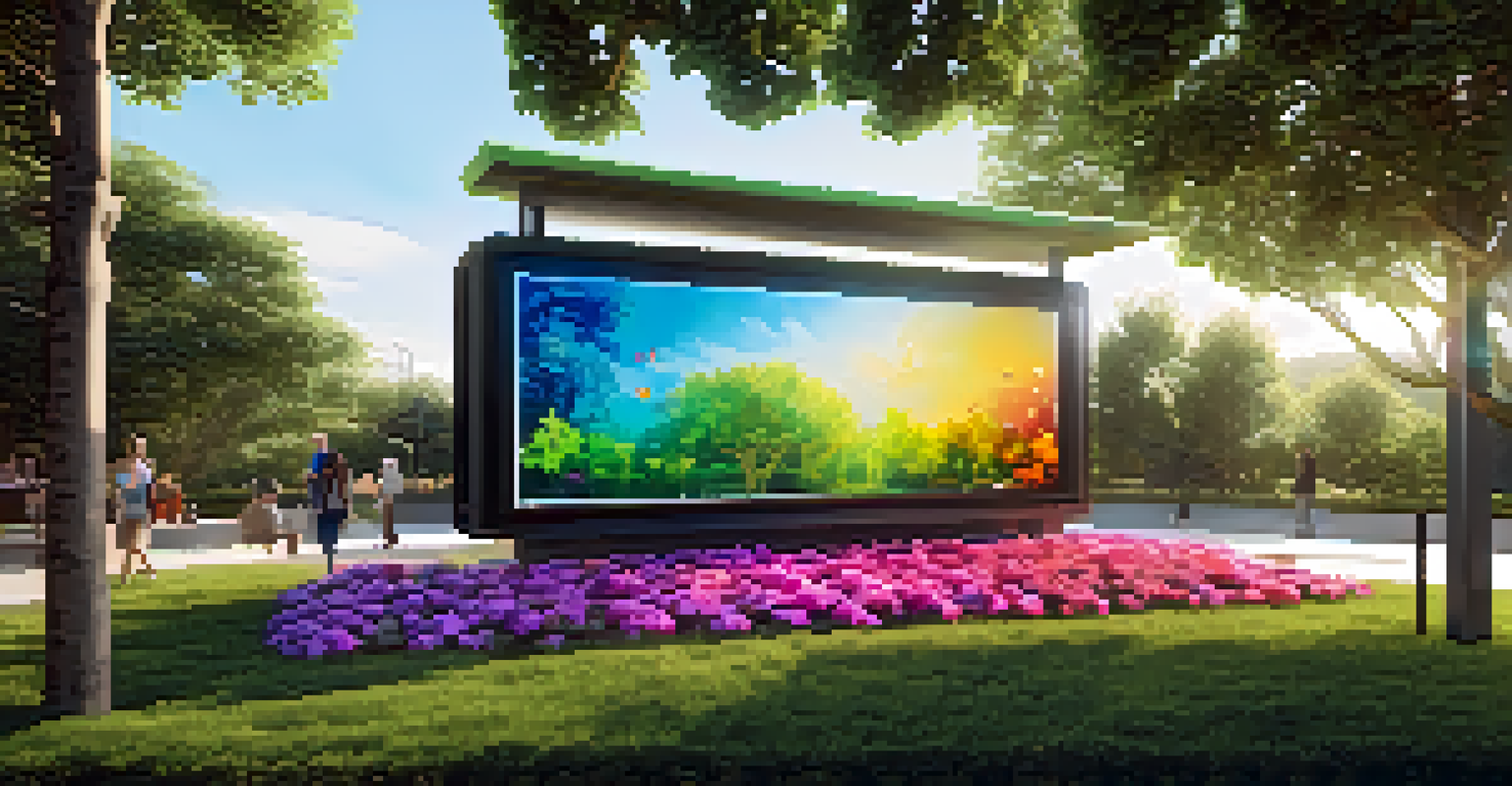The Intersection of Art and NFTs in the Expanding Metaverse

Understanding NFTs: A Digital Art Revolution
NFTs, or non-fungible tokens, have changed the way we view ownership in the digital realm. Unlike traditional art, which can be copied endlessly, NFTs provide a unique and verifiable proof of ownership. This means that when someone buys a digital artwork as an NFT, they own an original piece, just like a painting hanging in a gallery.
Art is not freedom from discipline, but disciplined freedom.
For artists, NFTs offer a new revenue stream and a way to reach global audiences without the constraints of physical galleries. Imagine being able to sell your artwork directly to collectors anywhere in the world, cutting out middlemen and maximizing your profits. This democratization of art ownership is one of the most exciting aspects of the NFT movement.
However, it's important to note that the NFT space is still evolving, and with it comes a mix of opportunities and challenges. Artists must navigate issues like copyright, market volatility, and environmental concerns related to blockchain technology. Understanding these factors is crucial for anyone looking to dive into the world of NFTs.
The Metaverse: A New Playground for Artists
The metaverse is often described as a collective virtual space, where people can interact, create, and share experiences. This expansive digital landscape provides an exciting canvas for artists to showcase their work in innovative ways. Imagine walking through a virtual gallery filled with 3D sculptures, interactive installations, and immersive digital paintings.

In the metaverse, artists are not limited to static displays; they can create dynamic and interactive experiences that engage viewers on a deeper level. For instance, a virtual art piece might change colors or shapes based on viewer interactions, offering a unique experience every time. This interactivity can transform the way we appreciate and engage with art.
NFTs Redefine Digital Ownership
NFTs provide unique proof of ownership for digital art, allowing artists to sell original works directly to collectors.
Moreover, the metaverse facilitates collaboration among artists, technologists, and audiences from around the globe. This interconnectedness fosters creativity and pushes the boundaries of what art can be. As artists explore this new digital frontier, we can expect to see groundbreaking works that challenge our understanding of creativity.
Bridging the Gap: Traditional Art Meets Digital Creations
While NFTs and the metaverse often focus on digital art, many traditional artists are beginning to embrace these new technologies. This fusion of traditional and digital art forms is creating a vibrant ecosystem that enriches both worlds. Imagine a painter who creates a physical artwork and then transforms it into a digital NFT, reaching a wider audience while preserving their original piece.
The future belongs to those who believe in the beauty of their dreams.
This bridge between traditional and digital mediums allows for innovative storytelling and expression. Artists can share the process behind their creations through videos, animations, or virtual tours, adding layers of depth that weren't possible before. This blend not only enhances the viewer's experience but also elevates the artist's narrative.
As more traditional artists enter the NFT space, we can expect a rich tapestry of artistic expression that combines techniques and styles from both realms. This evolution fosters a sense of community and collaboration, as artists learn from one another and push the boundaries of their craft.
The Role of Virtual Galleries in the Metaverse
Virtual galleries are becoming the new exhibition spaces for artists in the metaverse. These digital venues allow artists to curate their work in ways that were previously unimaginable. Picture a gallery where visitors can stroll through stunning landscapes, interact with art pieces, and even attend live events—all from the comfort of their homes.
These galleries not only showcase art but also provide a platform for community engagement. Artists can host virtual openings and Q&A sessions, allowing fans and collectors to connect directly with them. This sense of accessibility fosters a deeper appreciation for the art and the artists behind it.
Metaverse Enhances Artistic Experience
The metaverse allows artists to create interactive and dynamic art experiences, transforming viewer engagement.
However, creating a successful virtual gallery requires careful planning and design. Artists must consider user experience, aesthetic presentation, and technology integration to ensure that their work shines in this digital environment. As the technology continues to evolve, we can expect these virtual spaces to become more sophisticated and engaging.
Understanding the Market Dynamics of NFT Art
The NFT art market has experienced explosive growth, but it is also marked by volatility and unpredictability. Prices for some digital artworks have skyrocketed, while others have struggled to find buyers. For artists and collectors alike, understanding these market dynamics is crucial for making informed decisions.
Factors contributing to the market's fluctuations include trends in technology, shifts in consumer preferences, and the overall economic climate. For instance, a surge in interest from celebrities and influencers can drive up demand for certain NFTs, while a lack of media attention may lead to a slump. Keeping a pulse on these trends can help artists strategize their sales and marketing efforts.
It's also essential for artists to consider their pricing strategies carefully. Setting the right price for an NFT can be challenging, as it involves balancing perceived value with market demand. Artists should research comparable works and engage with the community to gauge interest, ensuring they find a sweet spot that reflects their art's worth.
Environmental Concerns Surrounding NFTs
As the popularity of NFTs continues to rise, so do concerns about their environmental impact. The blockchain technology that underpins NFTs often relies on energy-intensive processes, leading to significant carbon footprints. This has raised alarms among environmentally conscious artists and collectors who are passionate about sustainability.
However, the NFT community is actively seeking solutions to mitigate these concerns. Many artists are exploring eco-friendly blockchain platforms that utilize less energy-intensive methods, helping to reduce their environmental impact. Additionally, some artists are pledging a portion of their sales to environmental causes, demonstrating their commitment to sustainability.
Environmental Impact of NFTs
Concerns over the environmental impact of NFTs are prompting artists to seek eco-friendly solutions and practices.
As awareness grows, it’s crucial for the art community to engage in open discussions about these issues. By advocating for sustainable practices and supporting green initiatives, artists and collectors can work together to ensure that the NFT space evolves in a way that aligns with their values.
The Future of Art in the Metaverse: What Lies Ahead?
The intersection of art and NFTs in the metaverse is still in its infancy, and the possibilities are endless. As technology advances, we can expect to see even more innovative ways for artists to express themselves and for audiences to engage with their work. Imagine virtual reality experiences that completely immerse you in an artist's vision, or AI-generated art that evolves in real-time based on viewer interactions.
Moreover, the expanding metaverse could lead to new forms of collaboration that transcend geographical boundaries. Artists from different cultures and backgrounds can come together to create unique, hybrid works that celebrate diversity and shared experiences. This collaborative spirit could revolutionize the art world and redefine what it means to be an artist.

Ultimately, the future of art in the metaverse will hinge on the community's ability to adapt and innovate. As artists, collectors, and technology enthusiasts continue to explore this uncharted territory, we can look forward to a vibrant and dynamic artistic landscape that challenges our perceptions and inspires creativity.